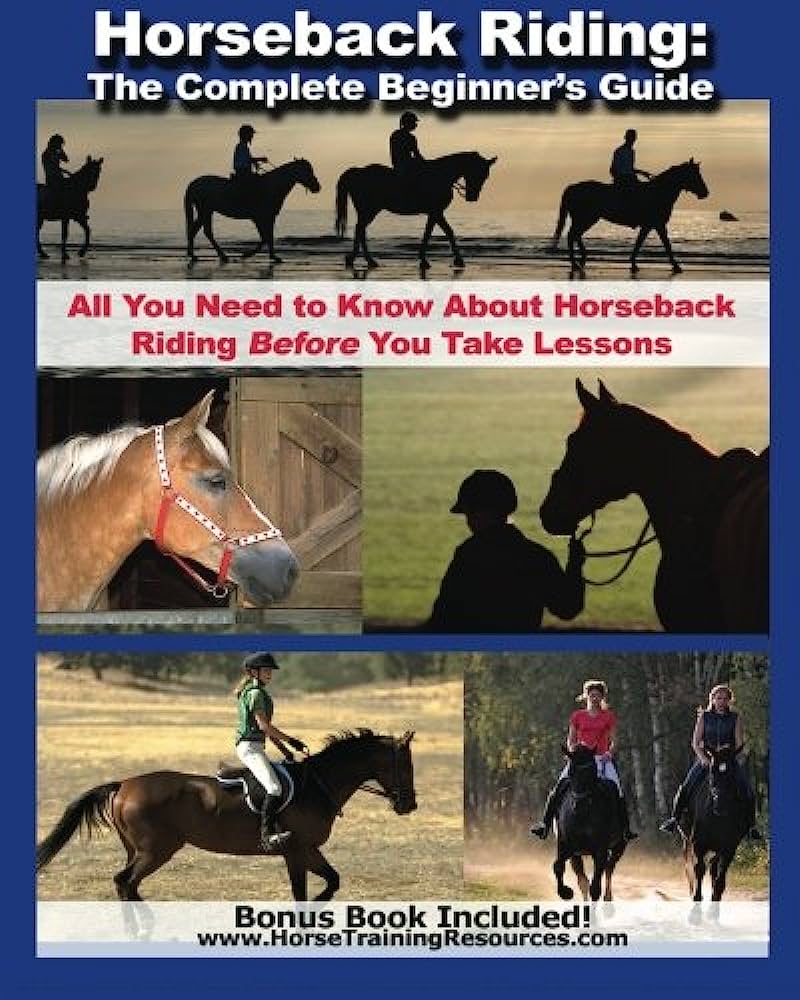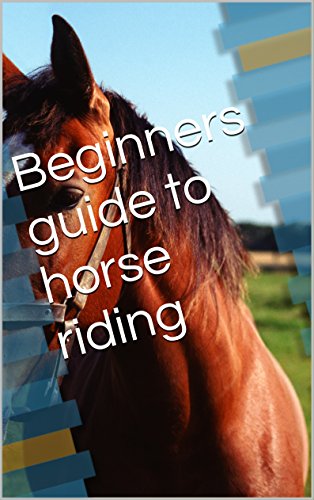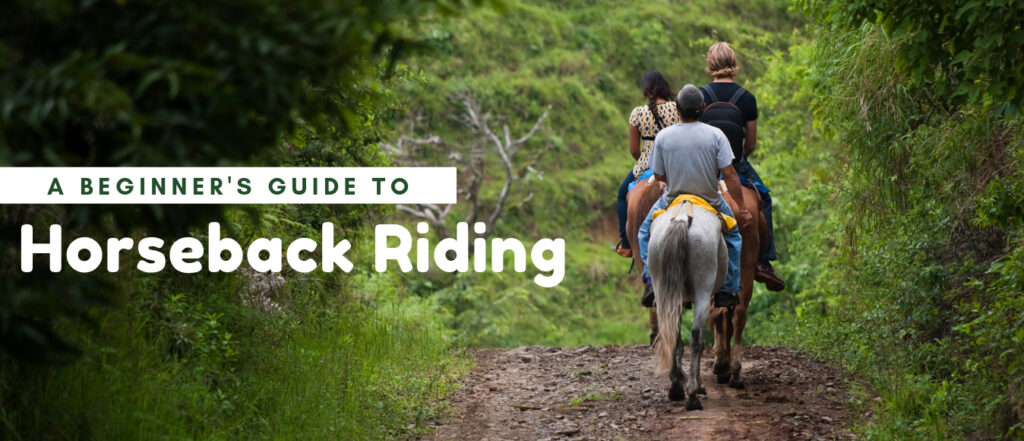Have you ever thought about trying horseback riding? It’s a popular activity that many people enjoy, and it’s a great way to connect with nature and experience the thrill of riding a horse. If you’re a beginner and want to learn more about horseback riding, you’ve come to the right place!
In this article, we’ll dive into the world of horseback riding and provide you with a beginner’s guide to get started. We’ll discuss everything from selecting the right horse and equipment to basic riding techniques and safety precautions. By the end of this article, you’ll have a solid understanding of what it takes to become a confident rider. So, if you’re ready to saddle up and embark on this exciting journey, let’s get started!
First and foremost, we’ll cover the basics of horseback riding, including the different types of riding styles, such as English and Western. We’ll also talk about the different horse breeds and their characteristics, as well as how to choose the right horse for your skill level. Along the way, we’ll provide tips on proper horse care and grooming. So whether you’re interested in trail riding, show jumping, or dressage, we’ve got you covered!
Stay tuned for our upcoming blog posts where we’ll go into more detail on each topic. We hope you’re as excited as we are to embark on this equestrian adventure together!
Beginner’s Guide to Horseback Riding

1. What is Horseback Riding?
Horseback riding is the art of riding a horse, and it has a rich history that dates back centuries. It is not only a recreational activity but also a sport and a way of connecting with nature. Horseback riding offers numerous physical and mental benefits and can be enjoyed by people of all ages and skill levels. In this beginner’s guide, we will explore the origins of horseback riding, its benefits, and the different types of horseback riding.
1.1 Origins of Horseback Riding
The origins of horseback riding can be traced back to ancient times when humans first domesticated horses. Horses were initially used as a means of transportation and for agricultural purposes. Over time, horseback riding evolved into a recreational activity and a form of military training. Today, horseback riding is enjoyed by millions of people worldwide.
1.2 Benefits of Horseback Riding
Horseback riding offers a range of physical, mental, and emotional benefits. Riding a horse requires balance, core strength, and coordination, which helps improve overall fitness. It also promotes better posture and increases flexibility. Additionally, horseback riding can provide a sense of freedom and relaxation, reduce stress levels, and boost self-confidence. The bond that develops between a rider and their horse can be incredibly therapeutic and fulfilling.
1.3 Different Types of Horseback Riding
There are various types of horseback riding, each with its own unique characteristics and disciplines. Western riding is commonly associated with cowboy culture and encompasses activities like barrel racing and cutting. English riding, on the other hand, is more traditional and includes disciplines such as dressage, show jumping, and cross-country. Other types of horseback riding include trail riding, endurance riding, and therapeutic riding.
2. Getting Started with Horseback Riding
If you’re new to horseback riding, it’s essential to start on the right foot. Here are some steps to help you get started:
2.1 Choosing the Right Horse
When choosing a horse, consider your skill level, riding goals, and budget. It’s crucial to select a horse that matches your experience and abilities. If you’re a beginner, look for a calm and well-trained horse that can help you build confidence and develop your riding skills.
2.2 Essential Equipment for Horseback Riding
Before you start riding, you’ll need to invest in some essential equipment. This includes a properly fitted riding helmet, riding boots, comfortable riding attire, and gloves. Additionally, you will need a saddle, bridle, and grooming tools for the horse. It’s important to get the right size and fit for all your equipment to ensure your safety and comfort.
2.3 Finding a Riding Instructor
Enlisting the help of a qualified riding instructor is highly recommended, especially for beginners. A skilled instructor can teach you the proper techniques and help you develop good riding habits. They will also guide you through the initial stages of horseback riding, ensuring your safety and enjoyment. Look for certified instructors with experience working with beginners.

3. Basic Techniques and Skills
To ride a horse effectively, you must learn and master some basic techniques and skills. This will provide a solid foundation for your journey as a rider.
3.1 Mounting and Dismounting a Horse
Mounting and dismounting a horse properly is essential for your safety and the horse’s comfort. Practice mounting and dismounting from both sides of the horse and ensure that you do it with control and balance.
3.2 Correct Seat and Posture
Maintaining the correct seat and posture while riding is crucial. Sit upright with your shoulders back, heels down, and a relaxed yet engaged posture. This will help you stay balanced and communicate effectively with your horse.
3.3 Holding the Reins and Basic Commands
Learning how to hold the reins correctly and use basic commands is vital for controlling and communicating with the horse. The reins should be held with a soft and consistent contact, and you should learn the basic commands for stop, go, turn, and back.
4. Understanding Horse Behavior
To have a successful and harmonious relationship with your horse, it’s important to understand their behavior and body language. Horses communicate through subtle cues, and recognizing these signs can help you respond appropriately.
4.1 Communication and Body Language
Horses communicate with each other and with humans through body language. They use their ears, eyes, tail, and posture to express their emotions and intentions. By observing and understanding these signals, you can better communicate with your horse and build trust.
4.2 Recognizing Signs of Stress or Discomfort
It’s crucial to be able to recognize when a horse is stressed or uncomfortable. Signs such as pinned ears, tail-swishing, or tense body language indicate that the horse is experiencing some form of distress. If you notice these signs, it’s important to address the underlying issue and ensure the horse’s well-being.
4.3 Building a Bond with Your Horse
Building a bond with your horse takes time and patience. Spending quality time with your horse, grooming them, and engaging in positive interactions will help foster a strong relationship. Trust and respect are the foundation of any successful partnership with a horse.

5. Riding Styles and Disciplines
There are various riding styles and disciplines that you can explore based on your interests and goals. Some popular riding styles include:
5.1 Western Riding
Western riding is associated with cowboy culture and is characterized by a relaxed and comfortable seat. It includes disciplines like barrel racing, reining, and cutting. Western saddles are typically larger and provide more stability and support.
5.2 English Riding
English riding is more traditional and is commonly seen in dressage, show jumping, and cross-country. It focuses on precision, control, and subtle communication between the rider and the horse. English saddles are smaller and lighter, allowing for greater freedom of movement.
5.3 Jumping and Cross-Country
Jumping and cross-country are disciplines within English riding that involve navigating obstacles and jumps. These disciplines require a combination of skill, agility, and trust between the rider and the horse. Jumping can be exhilarating and challenging, and it often attracts competitive riders.
6. Trail Riding and Exploring Nature
Trail riding allows you to connect with nature while enjoying the thrill of riding. It offers a change of scenery from the arena and provides an opportunity to explore new trails and landscapes.
6.1 Choosing a Riding Trail
When choosing a trail, consider the difficulty level, terrain, and distance. Start with shorter and easier trails if you’re a beginner and gradually work your way up to more challenging routes. It’s important to familiarize yourself with the trail and ensure it is safe for you and your horse.
6.2 Safety Tips for Trail Riding
Trail riding comes with its own set of safety considerations. Always wear appropriate safety gear, including a helmet, when riding on trails. Carry a first aid kit, a cell phone, and let someone know your riding plans and estimated return time. Be aware of your surroundings and any potential hazards, such as rough terrain or wildlife.
6.3 Enjoying the Scenic Views
One of the greatest joys of trail riding is experiencing the beauty of nature. Take the time to admire the scenic views, listen to the sounds of nature, and appreciate the tranquility that horseback riding in nature can provide.

7. Horse Care and Health
Taking care of your horse’s well-being is essential for their health and happiness. Proper horse care involves several aspects, including feeding and nutrition, grooming, and preventative health care.
7.1 Proper Feeding and Nutrition
Horses have specific dietary needs that must be met to ensure their optimal health. A balanced diet consisting of high-quality forage, grains, and supplements should be provided. It’s important to consult with an equine nutritionist or veterinarian to develop a feeding program tailored to your horse’s individual needs.
7.2 Grooming and Maintaining a Horse
Regular grooming is not only important for maintaining the horse’s appearance but also for their overall health. Grooming helps remove dirt, debris, and dead hair from the horse’s coat. Additionally, it allows you to inspect the horse’s skin for any signs of injury or infection.
7.3 Preventative Health Care
Preventative health care is crucial for keeping your horse in good health and preventing illness. This includes regular vaccinations, deworming, dental care, and hoof care. Regular veterinary check-ups are essential to catch any potential health issues early on.
8. Overcoming Riding Challenges
Horseback riding can present various challenges, both physical and mental. Here are some common challenges riders may face and strategies for overcoming them:
8.1 Fear and Confidence Issues
Fear and lack of confidence are common challenges faced by riders, especially beginners. It’s important to acknowledge these feelings and work with a supportive instructor to gradually build confidence. Start with small, achievable goals and celebrate each milestone along the way.
8.2 Dealing with Horseback Riding Injuries
Unfortunately, horseback riding can sometimes lead to injuries. It’s important to take appropriate safety precautions and always wear protective gear. In the event of an injury, seek medical attention and give yourself enough time to recover before getting back in the saddle.
8.3 Tackling Difficult Riding Maneuvers
Mastering difficult riding maneuvers takes time, practice, and patience. Break down complex movements into smaller steps and focus on mastering each step before progressing to the next. Working with a knowledgeable instructor or trainer can provide valuable guidance and support.

9. Competitions and Equestrian Events
Competing in equestrian events can add a new level of excitement and challenge to your horseback riding journey. Here are a few popular equestrian disciplines:
9.1 Dressage
Dressage is a discipline that focuses on precise and controlled movements. It tests the horse and rider’s ability to execute predetermined patterns with precision, rhythm, and harmony. Dressage competitions are known for their elegance and technicality.
9.2 Show Jumping
Show jumping involves navigating a course of jumps in a specified order within a specified time. It requires speed, accuracy, and bravery from both horse and rider. Show jumping competitions are fast-paced and thrilling to watch.
9.3 Rodeo and Western Competitions
Rodeo and western competitions exhibit a blend of skill, speed, and tradition. Events such as barrel racing, roping, and bronc riding showcase the cowboy heritage and require athleticism and precision.
10. Horse Riding Etiquette and Safety
When riding horses, it is essential to follow proper etiquette and prioritize safety. Here are some guidelines to keep in mind:
10.1 Proper Horse Riding Etiquette
Respect other riders and their horses by maintaining a safe distance and passing courteously. Communicate with other riders to avoid collisions, and always yield to faster or more experienced riders. Follow any rules and regulations specific to the riding facility or trail.
10.2 Riding Safety Guidelines
Safety should always be a top priority when horseback riding. Always wear a properly fitted helmet and appropriate riding attire. Observe safe riding practices, such as maintaining control of your horse, practicing good horsemanship, and being aware of your surroundings. Avoid risky behaviors that could put yourself, your horse, or others in danger.
10.3 Sharing Trails with Other Riders
When riding on shared trails, it’s important to be considerate of other riders and hikers. Keep a safe distance when passing, slow down when encountering pedestrians or other animals, and communicate clearly to avoid any misunderstandings. Leave no trace and clean up after your horse to maintain the beauty and integrity of the trail.
11. Horseback Riding for Fitness
Horseback riding is not only a fun and enjoyable activity but also a great way to stay fit and healthy. Here are some fitness benefits of horseback riding:
11.1 Improving Balance, Core Strength, and Flexibility
Riding a horse requires good balance, core strength, and flexibility. As you ride, your body is constantly adjusting to the horse’s movements, which helps build core stability and improves overall balance and coordination.
11.2 Calories Burned during Horseback Riding
Horseback riding can be a calorie-burning activity. The exact number of calories burned depends on various factors, such as the intensity and duration of the ride, rider weight, and the horse’s pace. On average, an hour of horseback riding can burn around 350-500 calories.
11.3 Cross-Training Benefits for Riders
Cross-training involves engaging in other forms of exercise to complement horseback riding. Incorporating activities such as yoga, Pilates, or strength training can help improve overall fitness, flexibility, and strength, which in turn can enhance your riding performance.
12. Therapeutic Horseback Riding
Therapeutic horseback riding, also known as equine-assisted therapy, is a form of therapy that utilizes horses to improve physical, emotional, and mental well-being. Here are some benefits of therapeutic horseback riding:
12.1 Benefits for Individuals with Disabilities
Therapeutic horseback riding can be incredibly beneficial for individuals with disabilities. The rhythmic motion of riding a horse can improve balance, coordination, and muscle strength. It also provides a sense of independence and boosts self-confidence.
12.2 Emotional and Mental Health Benefits
Interacting with horses has been shown to have positive effects on emotional and mental health. The bond formed between the rider and the horse can promote feelings of trust, empathy, and self-esteem. It can also reduce stress, anxiety, and symptoms of depression.
12.3 Programs and Organizations
Numerous programs and organizations offer therapeutic horseback riding for individuals with disabilities or special needs. These programs often have certified instructors and specially trained horses to ensure a safe and effective therapeutic experience.
13. Exploring Different Breeds of Horses
Horseback riding enthusiasts have the opportunity to explore and learn about different breeds of horses. Each breed has its own unique characteristics, temperament, and suitability for various riding styles.
13.1 Popular Horse Breeds for Riding
Some popular horse breeds for riding include the Quarter Horse, Thoroughbred, Arabian, and Warmblood breeds. Each breed has its own strengths and characteristics that make them well-suited for specific riding disciplines or purposes.
13.2 Characteristics and Temperament
Each horse breed has its own set of characteristics and temperament traits. Some breeds may be known for their docility and calm nature, while others may have a more energetic and spirited disposition. Understanding the characteristics of different breeds can help you find the right match for your riding style and goals.
13.3 Choosing the Right Breed for Your Riding Style
When selecting a horse breed, consider your riding goals, experience level, and riding style. Some breeds are better suited for Western riding, while others excel in disciplines like dressage or jumping. Researching different breeds and consulting with experienced horse owners or trainers can help you make an informed decision.
14. Conclusion
Horseback riding is a rewarding and fulfilling activity that offers numerous benefits. Whether you’re a beginner or an experienced rider, there is always something new to learn and explore. By understanding the basics of horseback riding, honing your skills, and prioritizing the well-being of your horse, you can embark on a lifelong journey of enjoyment, growth, and connection with these magnificent animals. Remember to always prioritize safety, respect, and proper care for the welfare of both you and your horse. Happy riding!
(Note: This article contains general information about horseback riding and should not be used as a substitute for professional advice. Consult with a qualified instructor or trainer for personalized guidance and instruction.)